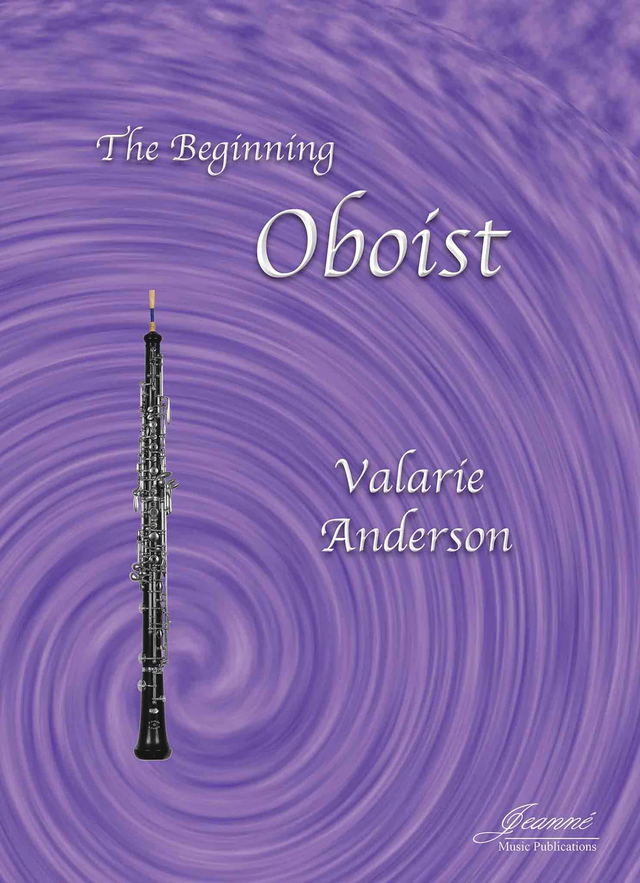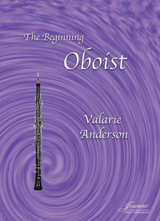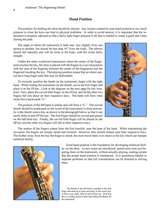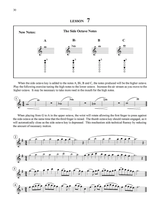A serious approach to music on any instrument requires the mastery of skills. The Beginning Oboist, by Valarie Anderson, presents exercises in a progressive manner, designed to develop those beginning skills that will be so important to good oboe playing. It is imperative that the student master the exercises presented in each lesson before progressing to the next.
The proper techniques of breathing, embouchure formation, hand position and articulation are all addressed. Fingering diagrams are included in each lesson as new notes are introduced. Although the emphasis is on learning to sustain the air column through a legato style of playing, the staccato style of articulation is also introduced.
Most of the exercises are eight measures long, consisting of quarter and eighth note rhythms. One measure finger drills are used to learn some of the more awkward fingering patterns, which are then incorporated into longer exercises. Although sixteenth notes and dotted-eighth sixteenth rhythms are introduced, the use is limited. Each lesson contains a duet, which can be played with the teacher to work on intonation. Four solo pieces are included, for which the piano accompaniments are available online as a free download. (see below)
Musical examples from the repertoire are introduced as soon as possible. The music is meant to be challenging with the hopes that the student will rise to it.
Table of Contents
Introduction: A Brief Historical Overview; Rudiments of Music; Breathing; The Embouchure; The Tongue;
Hand Position; Guide to Fingering Diagrams
Lesson 1: The notes B, A and G are introduced along with the use of legato articulation and 'Starting the tone.'
Lesson 2: The notes C and F-sharp are introduced along with eighth notes.
Lesson 3: The notes B-flat and E are introduced along with a discussion on dynamic contrast.
Lesson 4: The notes F and low D are introduced along with the staccato style of articulation.
Lesson 5: The thumb octave key is introduced for the octave E, F, F-sharp, G and G-sharp along with the use of sixteenths.
Lesson 7: The side octave key and octave A, B-flat, B and C as well as half-hole C-sharp are introduced.
Lesson 8: E-flat, octave E-flat, low C and low C-sharp are introduced along with the dotted-eighth sixteenth rhythm.
Lesson 9: The use of the forked F and alternate left hand F key
Lesson 10: The use of the alternate E-flat/ D-sharp key, and introduction of the low B and B-flat.



